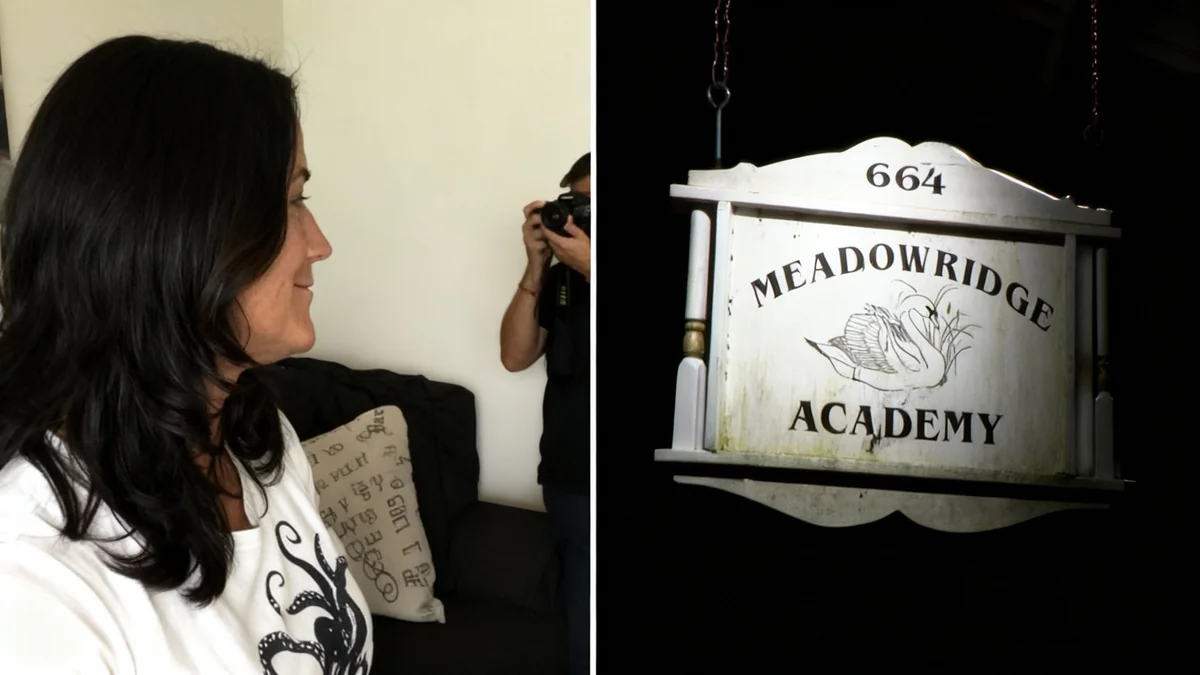The death of a staff member at a residential school in Swansea, Massachusetts, has placed a renewed focus on the practice of physically restraining students. The incident, which occurred at Meadowridge Academy, underscores the potential dangers and frequency of such interventions in educational settings across the state.
Amy Morrell, a staff member, died one day after a 14-year-old student kicked her in the chest during an attempt to restrain the youth, according to the Bristol County District Attorney's Office. This event has prompted calls for reform from advocates and raised questions about existing safety protocols.
Key Takeaways
- A staff member at Meadowridge Academy in Swansea died following an incident involving a student restraint.
- State data shows over 29,000 physical restraints were used in Massachusetts schools during the 2023-24 school year.
- These interventions resulted in nearly 900 reported injuries to students or staff statewide.
- Advocates are urging a shift towards preventative strategies to reduce the need for physical restraints.
Details of the Swansea Incident
The event at Meadowridge Academy has brought significant attention to the risks associated with physical interventions in schools. Amy Morrell was involved in restraining a 14-year-old student on a Wednesday when the incident occurred. The Bristol County District Attorney's Office confirmed she passed away the following day.
Meadowridge Academy is a residential facility for youth, meaning it operates under a specific set of state regulations. The incident took place in the evening, after regular school hours, which places it under the jurisdiction of a different state agency than the one that oversees daytime school activities.
Understanding Physical Restraint
Physical restraint in an educational context refers to a personal, physical restriction that immobilizes or reduces the ability of a student to move their torso, arms, legs, or head freely. Massachusetts state law permits its use only in emergency situations where a student's behavior poses an imminent threat of serious physical harm to themselves or others, and only when less intrusive methods have failed or are deemed inappropriate.
Statewide Data on Restraint Use
The practice of restraining students is more common than many realize. Data collected by the Massachusetts Department of Elementary and Secondary Education (DESE) provides a clear picture of its prevalence.
During the 2023-24 school year, schools across Massachusetts reported using physical restraints a total of 29,074 times. These incidents led to 891 documented injuries affecting either students or staff members involved.
Restraints in Massachusetts Schools (2023-24)
- Total Incidents: 29,074
- Resulting Injuries: 891
- Meadowridge Academy Incidents: 16
- Meadowridge Academy Injuries: 0
Source: Massachusetts Department of Elementary and Secondary Education
According to the same state data, Meadowridge Academy in Swansea reported 16 instances of restraint during that period, with no resulting injuries. This highlights that while the facility had a history of using restraints, the fatal outcome of the recent incident was an anomaly according to reported statistics.
A Complex Regulatory Framework
The use of restraints in Massachusetts is governed by strict regulations, but jurisdiction can be complex. Two primary state agencies oversee these procedures, depending on the context of the incident.
Department of Elementary and Secondary Education (DESE)
The DESE sets the rules for public and private day schools. Its regulations stipulate that physical restraints are an emergency measure of last resort. The rules also mandate comprehensive training for all staff who may be called upon to use them, focusing on de-escalation techniques and safe application.
Department of Early Education and Care (EEC)
For residential facilities like Meadowridge Academy, the Department of Early Education and Care has its own set of regulations. Because the incident involving Amy Morrell occurred after school hours, EEC's rules would likely apply. This agency is also investigating the incident to ensure its protocols were followed.
Advocates Call for Systemic Change
Following the tragedy, advocates for children with special needs are renewing their calls for significant reform. They argue that the focus should shift from managing crises to preventing them from ever occurring.
Jennie DunKley, an advocate for special education children and their families, emphasized the need for proactive measures rather than reactive interventions.
"I want to focus on implementing meaningful strategies and tools that prevent escalation. The best way to prevent restraint and seclusion is to not have a reason to even consider it," DunKley stated.
This perspective suggests that a high number of restraints may indicate a systemic failure to provide students with the necessary behavioral and emotional support. Advocates believe that by investing in training for de-escalation, positive behavior supports, and trauma-informed care, schools can create safer environments for everyone and dramatically reduce the number of physical interventions.
The death at Meadowridge Academy serves as a stark reminder of the high stakes involved. As state agencies continue their investigations, the conversation about how to best ensure the safety of both students and staff is expected to intensify, with many hoping it leads to lasting and meaningful change.





